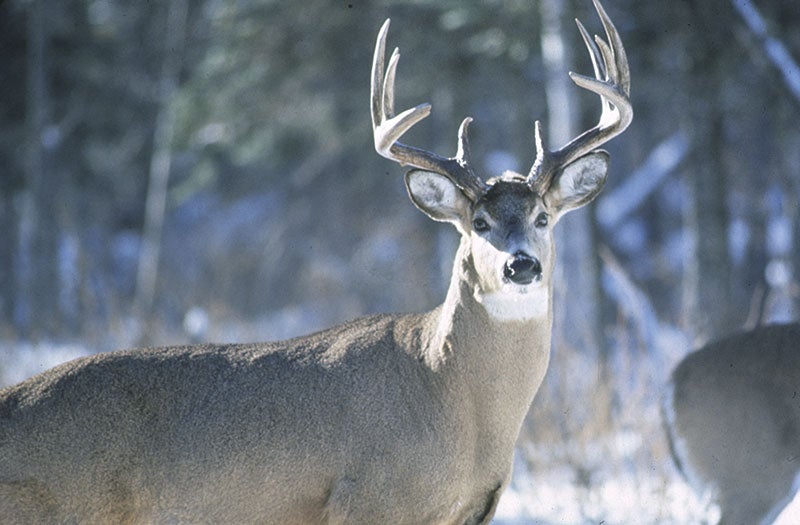Chronic wasting disease cases rising in 3 states
Published 9:40 am Wednesday, January 11, 2017

- Minnesota reports two more suspected cases of chronic wasting disease found in southeast Minnesota deer, as cases rise across the Minnesota, Wisconsin and Iowa. Photo courtesy the Minnesota Department of Natural Resources
MINNEAPOLIS — Wildlife managers have found two more deer suspected of being infected with chronic wasting disease near the southeastern Minnesota town of Preston, raising the number of confirmed and presumed cases in the area to five, the Department of Natural Resources announced Tuesday.
The does were killed within a mile of where the first two deer that tested positive were shot in November, which marked the first detection of the fatal brain disease in wild deer in Minnesota since 2010. The DNR expects confirmation later this week. Here’s a look at what the reappearance of the disease means for Minnesota, as well as Wisconsin and Iowa:
The cases so far
The first two cases turned up between Preston and Lanesboro in Fillmore County in November as part of ongoing testing the DNR has been conducting on deer killed by hunters in southeastern Minnesota, and they prompted the agency to test even more samples than originally planned. A third deer, shot about 5 miles north of the first two, tested positive late last month. The disease also turned up farther north in two does at a deer farm in Crow Wing County in central Minnesota late last month. There’s probably no direct connection between the two areas, which are separated by nearly 220 miles, but DNR officials say they don’t know how the disease resurfaced after going undetected for so long. The disease has also turned up at five other deer and elk farms in the state since 2002.
Minnesota’s response
The DNR will now consider having hunters kill even more deer in the area than first envisioned so scientists can better assess the prevalence of the disease and strategize on how to prevent its spread. But the DNR’s wildlife research manager, Lou Cornicelli, said they won’t make any decisions until after the current special hunt to thin out the population in the area concludes Sunday. The DNR has declared a 371-square-mile disease management zone around Preston, imposed a five-county deer feeding ban and completed an aerial population survey. The DNR has also handed out around 115 permits to landowners that will let them or people they authorize shoot deer on their property starting Monday.
Neighboring states
Chronic wasting disease has taken root in neighboring Wisconsin, where it first appeared in 2002 and has now spread to 43 counties, including three bordering Minnesota. Some 215 of the more than 5,300 deer heads turned in by hunters last season tested positive. Feeding wild deer is prohibited in most of the 43 counties to discourage them from congregating, and the movement of carcasses from them is restricted. But it’s been an uphill fight with limited resources and waning public interest. The state is updating its response plan with a goal of finalizing it in March.
The disease has also turned up in northeastern Iowa, in Allamakee County, which borders Minnesota and Wisconsin. Iowa’s first case among wild deer was one shot in 2013. Three more deer harvested there in 2014 tested positive, then two more from 2015. The Iowa DNR plans to continue extensive surveillance, concentrating on counties near Wisconsin and Illinois where the disease has been confirmed. It was also found at a deer farm in Buchanan County of eastern Iowa in December, and at a shooting preserve in Davis County in southern Iowa in 2012.
The cause and the risks
The disease causes brain lesions in deer, elk and moose. It’s caused by an abnormal protein called a prion. Infected animals suffer progressive weight loss and abnormal behavior before they inevitably die. The prions can spread from deer to deer by nose-to-nose contact, or via saliva and excrement, and can persist in the soil for years. It’s related to “mad cow” disease, but there’s no evidence that it can spread to people. Still, health officials recommend that hunters wear protective gloves while field dressing and butchering their deer, and to avoid eating brains or venison containing spinal cord tissue.





